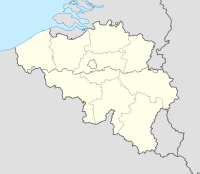Siege of Liège
| Battle of Liège | |||||||||
|---|---|---|---|---|---|---|---|---|---|
| Part of the Western Front of World War I | |||||||||
 Belgian troops defending a Herstal suburb, just north-east of Liège. |
|||||||||
|
|||||||||
| Belligerents | |||||||||
|
|
|
||||||||
| Commanders and leaders | |||||||||
|
|
|
||||||||
| Strength | |||||||||
| 28,900–31,200 troops 140 guns |
32,000 troops 280 guns. |
||||||||
| Casualties and losses | |||||||||
| 3,300 (by 8 August) | 6,000–20,000 casualties including 4,000 captured |
||||||||
|
Liège, Arrondissement of Liège, Belgium
|
|||||||||
The Battle of Liège (French: Bataille de Liège) was the opening engagement of the German invasion of Belgium and the first battle of World War I. The attack on Liège city began on 5 August 1914 and lasted until 16 August, when the last fort surrendered. The length of the siege of Liège may have delayed the German invasion of France by 4–5 days. Railways needed by the German armies in eastern Belgium were closed for the duration of the siege and German troops did not appear in strength before Namur until 20 August.
Belgian military planning was based on an assumption that other powers would eject an invader. The likelihood of a German invasion did not lead to France and Britain being seen as allies or for the Belgian government to intend to do more than protect its independence. The Anglo-French Entente (1904) had led the Belgians to perceive that the British attitude to Belgium had changed and that it was seen as a British protectorate. A General Staff was formed in 1910 but the Chef d'État-Major Général de l'Armée (Chief of the General Staff), Lieutenant-Général Harry Jungbluth was retired on 30 June 1912 and not replaced until May 1914 by Lieutenant-General Chevalier de Selliers de Moranville who began planning for the concentration of the army and met railway officials on 29 July. Belgian troops were to be massed in central Belgium, in front of the National redoubt of Belgium ready to face any border, while the Fortified Position of Liège and Fortified Position of Namur were left to secure the frontiers. On mobilization, the King became Commander-in-Chief and chose where the army was to concentrate. Amid the disruption of the new rearmament plan, the disorganised and poorly trained Belgian soldiers would benefit from a central position, to delay contact with an invader but it would also need fortifications for defence, which were on the frontier. A school of thought wanted a return to a frontier deployment in line with French theories of the offensive. Belgian plans became a compromise in which the field army concentrated behind the Gete river with two divisions forward at Liège and Namur.
...
Wikipedia

